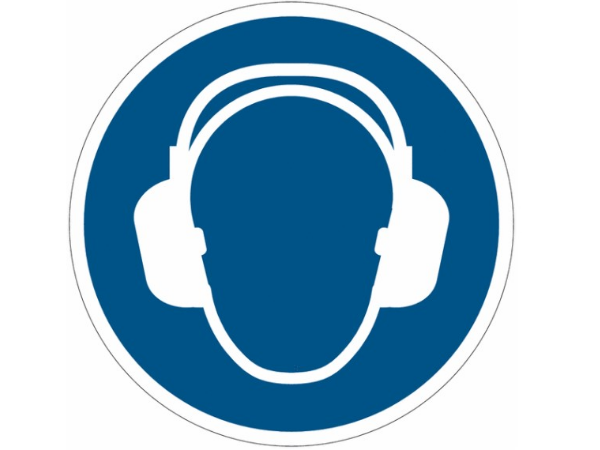This manual entry serves as a warning regarding the noise level produced by the machine. In accordance with the United Kingdom Provision and Use of Work Equipment Regulations (PUWER) standards, it is essential to prioritize the safety and well-being of machine operators and other personnel in the vicinity. One crucial aspect of this safety standard is the requirement for ear protection when operating or working near noisy machinery.
Noise Hazard Assessment
Before discussing the specific ear protection measures, it is essential to understand the noise hazard associated with this machine. Noise levels can vary depending on the type of profile, cutter type, blade condition and general maintenance of the machine. Noise hazards are typically categorized as follows:
- Low Noise: Noise levels that do not exceed 80 decibels (dB) typically do not require ear protection but may still be subject to noise control measures to ensure operator comfort and safety.
- Moderate Noise: Noise levels between 80 dB and 85 dB may require the provision of ear protection if operators are exposed for extended periods.
- High Noise: Noise levels exceeding 85 dB are considered high and necessitate the use of ear protection at all times.
PUWER Standards Compliance
The UK Provision and Use of Work Equipment Regulations (PUWER) mandate that employers and operators of work equipment must assess and reduce risks to health and safety. In the context of noise hazards, PUWER states:
- Employers must identify and assess the risk from exposure to noise, taking into account the daily or weekly exposure levels.
- If there is a risk to health and safety due to exposure to high noise levels, employers are required to provide ear protection.
- Employers must also provide information, instruction, and training to employees on the potential risks and the correct use of personal protective equipment, including ear protection.
Ear Protection Requirements
Considering the noise hazard assessment and PUWER standards, it is crucial to emphasize that ear protection is mandatory when working with or near this machine, particularly if it falls under the category of moderate to high noise levels.
- Earplugs or Earmuffs: Operators and personnel working in the vicinity of the machine should wear earplugs or earmuffs designed to attenuate noise effectively. The type of ear protection should be selected based on the specific noise levels and the duration of exposure.
- Proper Fit: Ensure that the chosen ear protection fits correctly and provides adequate noise reduction. Inadequate fitting may compromise the protection provided.
- Maintenance: Regularly inspect and maintain ear protection equipment to guarantee its effectiveness and replace it if it becomes damaged.
Conclusion
Adherence to PUWER standards and the provision of ear protection is essential to protect the hearing health and overall well-being of workers. Failing to implement these safety measures may result in serious health issues and regulatory non-compliance. It is the responsibility of both employers and employees to ensure that ear protection is worn when necessary and that all other safety measures are followed while operating this machine.
Draft

 Français
Français English
English Deutsch
Deutsch Español
Español Italiano
Italiano Português
Português